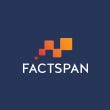The Do’s and Don’ts Of Predictive Analytics in the Retail Industry
As a retailer if you are aware of your customer’s needs, half the battle is won. Hence, retailers have adopted predictive analytics to get more insights into how customers behave or what the best pricing is. Even with the surge in the use of big data, firms are slowly transitioning to set up big data platforms for their decision-making.
The retail space has always been competitive from direct-to-consumer enterprises, brick-and-mortar stores to eCommerce. New age retailers are now demanding any edge available — and they’re using automation to get it.
Decoding Predictive Analytics
Predictive analytics has been trending in the retail space for a long time. But let’s first start by understanding what is predictive analytics & how it is used in retail. From customer information to analyzing buyer journeys, retailers are collecting data at rapid rates. Thus, predictive analytics acts as a way to determine how to make the best use of the gathered data. Moreover, it could tell retailers the likelihood of future trends, upcoming sales to potential product shortages. In short, it predicts the plausibility of what is going to happen in the business and carving strategic decisions accordingly.
In a brick-and-mortar store, a salesperson has the feasibility to map out the customer journey. Relatively, virtual stores are only churning out customer data. Hence, the real challenge is to connect the right dots and infer the engagement levels of a shopper at every level of the customer journey. In turn, stores could push personalized ads and encourage shoppers to buy more. Furthermore, predictive analytics not only benefits retailers but also helps customers by calculating the higher discount rates for their preferred purchase list.
Also, read Roadblocks To a Successful Visual Search in eCommerce Store
Retailers are constantly trying to understand customer sentiment and buying patterns to provide a better customer experience. However, it is ambitious for a retail organization to adopt a predictive analytics tool in deriving useful insights from customer data. Hence, we have jotted down a few quick points to assist retailers before they plan to adopt predictive analytics.
- Do Plan Ahead to Avoid Organizational Data Barriers
Often retailers have technical and organizational barriers that put a stop to getting the data they need. Moreover, there can be barriers such as some POS systems that store customer data that may not connect directly to centralized data warehouses. Also, departments like logistics have their own data management teams hence they might not share it freely with data science teams. - Do Identify Data Literacy Requirements
Retailers need to be prepared with a few questions before they deploy the predictive analytics tools. It is imperative for an organization to clarify who will be running the software, which retail departments will be using these tools, list the other tools which will interact with predictive analytics tools, last but not least the budget. - Don’t Overspend Time on Data Collection & Sorting
Let’s say, as a retailer you wish to predict the kinds of products customers would be interested in or what are they likely to add to their wishlist. One of the uses of predictive modeling is online advertising and marketing. However, the initial step is where most modelers stumble. It is overspending time in gathering and sorting the right data to develop algorithms. By some estimates, data scientists spend about 80% of their time on this step. - Don’t Use Outdated Tools
Generally, predictive analytics solutions are standalone, hence switching from one application to another can be a bit tricky. Moreover, traditional predictive analytics tools are difficult to scale and deploy. Because the old algorithms aren’t flexible enough to adapt to the new-age problems.
In conclusion, the challenge for retailers is to find new ways to retain the customers, generate revenue, reduce product costs and expand market share at the same time mitigating the risks. Fortunately, predictive analytics empowers retail businesses. It assists businesses to start using existing data insights. Successively, it could reduce business operational costs and increase efficiency. Furthermore, retailers could retain customers as it provides insights on more precise and personalized product estimations.
